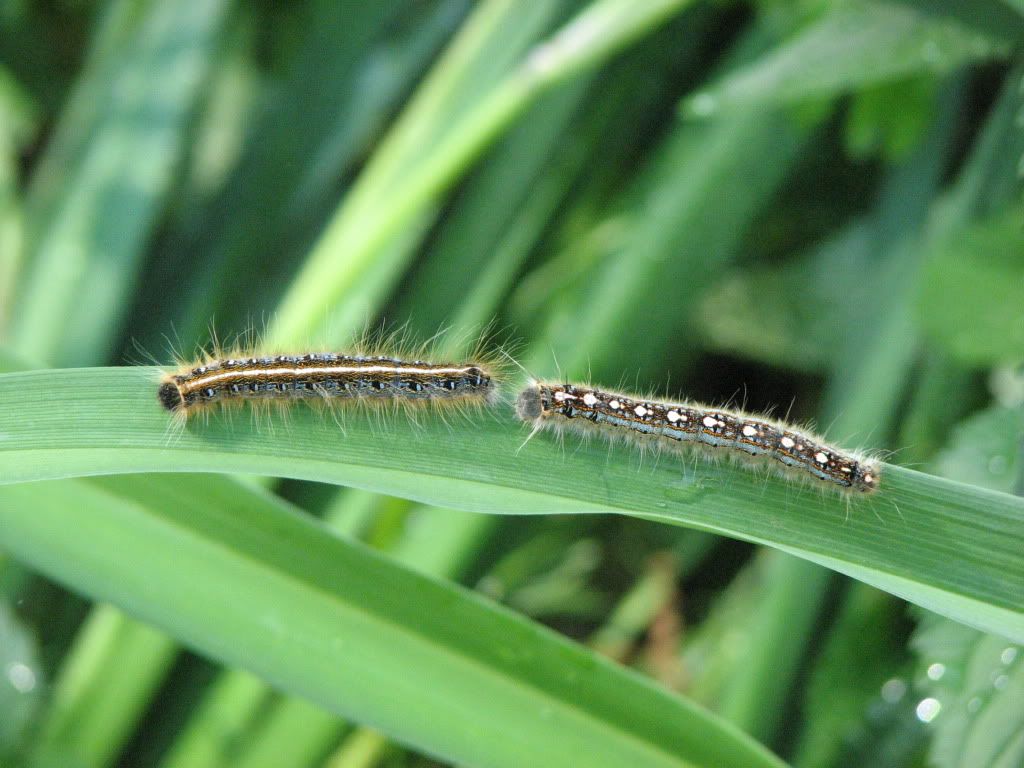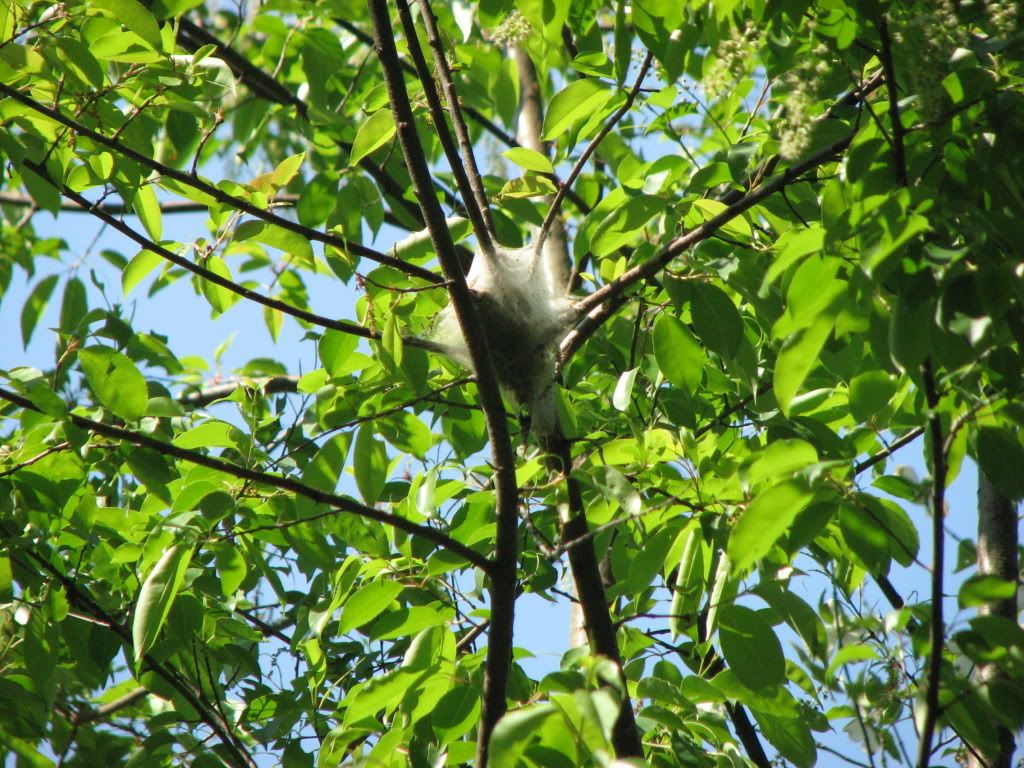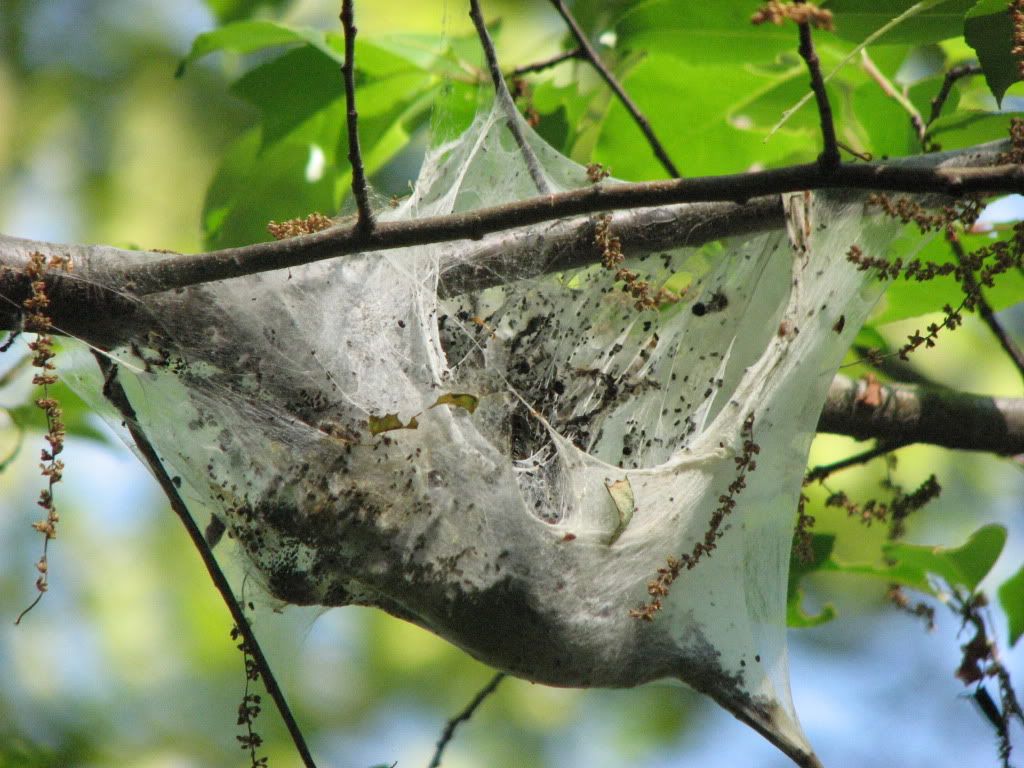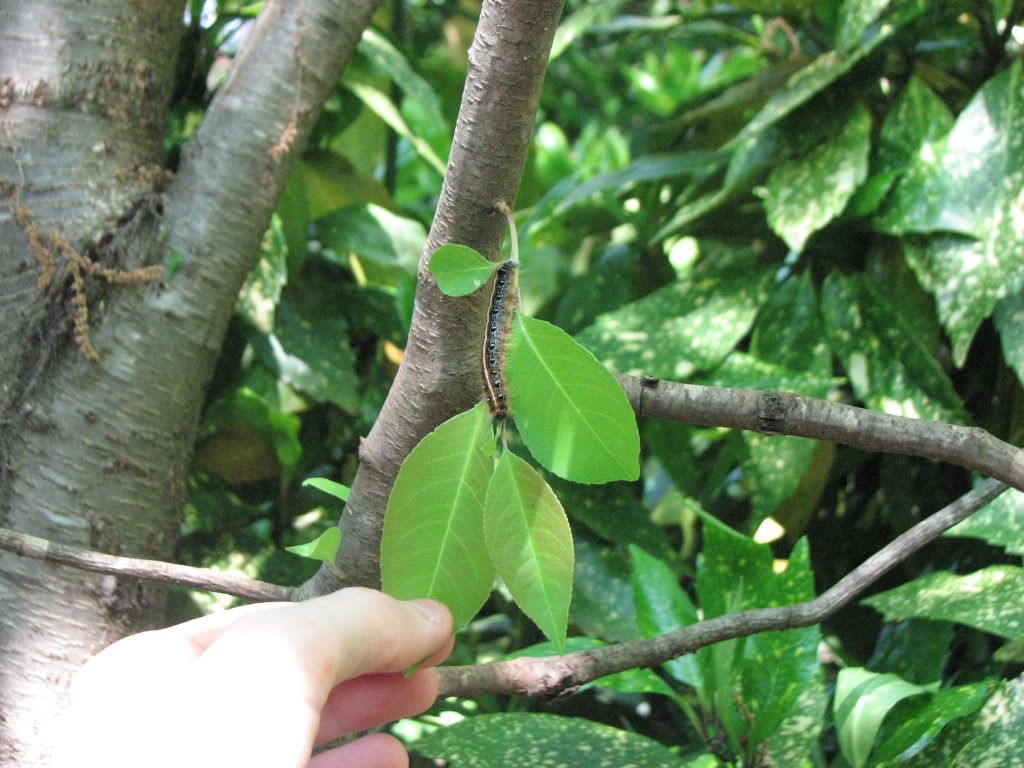How to Identify Eastern and Forest Tent Caterpillars
Tent caterpillars aren’t the end of the world. They may attack your ornamental or orchard trees but unless a tree is already suffering from other stresses it should recover quickly.
These native, spring ephemeral caterpillars are often confused with fall webworms (Hyphantria cunea) or gypsy moths (Lymantria dispar). Fall webworms also have a brief life cycle (in the fall instead of the spring) and cause minimal damage to their host trees. Gypsy moths are an invasive species that can breed all season and destroy the plants they eat.

Photo Caption: Eastern tent caterpillars (left) and forest tent caterpillars (right) emerge in the spring and live in clusters on their host trees.
Shortly after hatching from the previous season’s eggs, eastern tent caterpillars begin building silk nests which they enlarge over their short feeding season. Their preferred host trees are wild cherries but they will also eat other species in the apple (Malus) and cherry (Prunus) families.

Photo Caption: Eastern tent caterpillars hide inside their silk nest during the day and feed in the evening. It is an effective barrier against most predators and pesticides.
Most of the time the caterpillars do little damage, even if they completely defoliate the tree. Once their life cycle is completed the tree simply puts out new leaves and moves on.

Photo Caption: Did you ever dissect owl pellets in class? A fun project to do with kids is to dissect a tent caterpillar nest. The onion-like layers of the nest will correspond with the growth of the caterpillars. In the center layers you will find tiny frass (poop) and discarded exoskeletons tangled in the silk fibers. You can compare these to the much larger frass and exoskeletons left behind in the outer layers. It's an easy illustration of insect metamorphosis and growth.
Forest tent caterpillars do not build an enclosed nest like their eastern relatives. Instead, they huddle together on silk pads spun on the bark of their favorite trees. They also eat a broader range of species than the eastern tent caterpillar but in the Appalachians this is usually some sort of oak.

Photo Caption: Forest tent caterpillars prefer various oaks in the Appalachias. They are also known to eat sugar maple, aspen, birch, cherry, sweetgum, tupelo, cottonwood, basswood, elm, willow, and ash.
Forest tent caterpillars are more likely to be spotted singly or on the trunks of trees while you are hiking.

Photo caption: Birds love to eat the tiny berries of this native wild cherry and spread them to roadsides and fields throughout the southeast. White eastern tent caterpillar nests litter their branches in the spring but the cherries recover quickly with a new leaves and a (tasty) crop of fruit in early summer.
Both of these tent caterpillar species are furry and harmless to touch. They make great educational pets if you have their host plant nearby so that you can replenish their food supply. A well-ventilated container (cleaned frequently) makes an excellent caterpillar home. Crowded or dirty cages are prone to an insect disease called grasserie. All caterpillars are voracious eaters and if they are allowed to run out of food they may pupate early as an “emergency.” This usually results in a smaller-sized butterfly or moth (though sometimes they will die).
Tent caterpillars turn into somewhat plain, clumsy brown moths. Their adult photos can be seen here:
14 thoughts on “How to Identify Eastern and Forest Tent Caterpillars”
Comments are closed.

Curbstone Valley Farm - April 30, 2010 2:42 pm
Interesting post, I never thought about dissecting a tent caterpillar nest. I do have an owl pellet on my desk though! We have the Western tent caterpillar species out here (Malacosoma californicum), although I haven’t seen any on the farm, thankfully.
.-= Curbstone Valley Farm´s last blog ..First Day Out =-.
Sustainahillbilly
Twitter: appalachianfeet
- May 6, 2010 1:42 pm
I had to look up the western tent caterpillar… they do look similar but its colors remind me of tiger’s eye. Did you find your owl pellet?
.-= Sustainahillbilly´s last blog ..How to Grow Vegetables (Archive Directory) =-.
Meredith - April 30, 2010 4:14 pm
I used to pick these out of my grandmother’s garden and put them in jars in the spring, and she was so happy I was spiriting them away from the vicinity of her roses she offered to pay me. I never accepted, of course, and I released the caterpillars in my neighborhood instead (far from any cherry or plum trees, I now realize with dismay).
But does this mean they do not eat roses?? Wonder why she thought so.
I’ll suggest the nest dissection to my friends with kids who are not squeamish (the parents, that is, not the kids — are kids ever squeamish, without training?) Sounds cool.
.-= Meredith´s last blog ..one reason to grow your own =-.
Sustainahillbilly
Twitter: appalachianfeet
- May 6, 2010 1:43 pm
I’ve found them on my roses but I think it is because they fall off their host tree and get lost. I never see them eating it. If I carry them back to the cherry they start munching like they are starving.
.-= Sustainahillbilly´s last blog ..How to Grow Vegetables (Archive Directory) =-.
Erin - April 30, 2010 6:19 pm
Finn has been crazy about the eastern tent caterpillars this year (I didn’t know what kind they were until now). He caught probably 20 of them over the past few weeks (kept them a few hours and released them; it was very hard to convince him that this was the correct course of action). Thanks!
Sustainahillbilly
Twitter: appalachianfeet
- May 6, 2010 1:44 pm
I can relate… and I think it takes a long time for that urge to go away. In my family we had that discussion about a baby snake yesterday. 😉
.-= Sustainahillbilly´s last blog ..How to Grow Vegetables (Archive Directory) =-.
Lisa - May 1, 2010 11:57 pm
We had these on our crab apple trees, when I was growing up in Maryland. The dropping frass always grossed me out.
.-= Lisa´s last blog ..The Many Colors of Pollen =-.
Sustainahillbilly
Twitter: appalachianfeet
- May 6, 2010 1:45 pm
Yeah, it kind of sounds like it’s raining! But not…
.-= Sustainahillbilly´s last blog ..How to Grow Vegetables (Archive Directory) =-.
Lisa - May 1, 2010 11:58 pm
We had Gypsy Moths on our crab apple trees, when I was growing up in Maryland. The dropping frass always grossed me out.
.-= Lisa´s last blog ..The Many Colors of Pollen =-.
Sustainahillbilly
Twitter: appalachianfeet
- May 6, 2010 1:54 pm
Oh! I just realized you had a second comment about them being gypsy moths. I’ve heard picnic horror stories where people took a while to realize just what the little pellets falling out of the trees were. I think gypsy moths are more notorious than tent caterpillars since the tent species are mostly nocturnal feeders. Not many picnickers out at night…
.-= Sustainahillbilly´s last blog ..How to Grow Vegetables (Archive Directory) =-.
Sandra - May 2, 2010 8:43 am
Well do I remember you and Lynn at the Smithsonian Museum, Bug Department, with that LARGE…no, make that GIANT Madagascar cockroach on your little hand. You wanted me to hold it and, I seem to remember -grin- I politely declined. Truth is, I almost wanted to throw up. I enjoyed that weekend, it was fabulous and what good memories!
.-= Sandra´s last blog ..My Marrakesh =-.
Sustainahillbilly
Twitter: appalachianfeet
- May 6, 2010 1:56 pm
I think the Smithsonian’s insect zoo might be the very best thing in DC.
.-= Sustainahillbilly´s last blog ..How to Grow Vegetables (Archive Directory) =-.
REBECCA - August 21, 2010 10:41 am
I have an outbreak of caterpillars on my oaks…but there are so many on a young oak that the tree is deleafed( only about 4 feet high)These caterpillars are about an inch, red and yellow striped with a red head, and some body hairs. For one, I am concerned they will just starve and picked the wrong tree. What is recommended to do? I try to never kill anything if I can help it, and avoid the use of any pesticides.
REBECCA - August 21, 2010 10:47 am
I meant to mention these red and yellow caterpillars are bunched up in large clumps along the deleafed tree stems…I don’t want to hurt them, see them starve, or cause damage to anything healthy. WHat is their normal lifetime/life cycle? Thank you for the info and help!